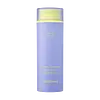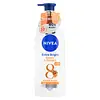What's inside
What's inside
 Key Ingredients
Key Ingredients

 Benefits
Benefits

 Concerns
Concerns

 Ingredients Side-by-side
Ingredients Side-by-side

Water
Skin ConditioningPropylheptyl Caprylate
EmollientTromethamine
BufferingC12-15 Alkyl Benzoate
AntimicrobialUrea
BufferingGlycolic Acid
BufferingLactic Acid
BufferingNiacinamide
SmoothingDipropylene Glycol
HumectantCetearyl Alcohol
EmollientGlyceryl Stearate
EmollientPEG-100 Stearate
1,2-Hexanediol
Skin ConditioningCetearyl Glucoside
EmulsifyingSodium Polyacryloyldimethyl Taurate
Emulsion StabilisingCaprylic/Capric Triglyceride
MaskingGlycerin
HumectantCaprylyl Glycol
EmollientPolyacrylamide
Salicylic Acid
MaskingSphingomonas Ferment Extract
Skin ConditioningC13-14 Isoparaffin
EmollientDisodium EDTA
Bakuchiol
AntimicrobialEthylhexylglycerin
Skin ConditioningXanthan Gum
EmulsifyingAdenosine
Skin ConditioningLaureth-7
EmulsifyingRetinal
Skin ConditioningBeta-Glucan
Skin ConditioningTocopherol
AntioxidantWater, Propylheptyl Caprylate, Tromethamine, C12-15 Alkyl Benzoate, Urea, Glycolic Acid, Lactic Acid, Niacinamide, Dipropylene Glycol, Cetearyl Alcohol, Glyceryl Stearate, PEG-100 Stearate, 1,2-Hexanediol, Cetearyl Glucoside, Sodium Polyacryloyldimethyl Taurate, Caprylic/Capric Triglyceride, Glycerin, Caprylyl Glycol, Polyacrylamide, Salicylic Acid, Sphingomonas Ferment Extract, C13-14 Isoparaffin, Disodium EDTA, Bakuchiol, Ethylhexylglycerin, Xanthan Gum, Adenosine, Laureth-7, Retinal, Beta-Glucan, Tocopherol
Water
Skin ConditioningOctocrylene
UV AbsorberSodium Phenylbenzimidazole Sulfonate
UV AbsorberC12-15 Alkyl Benzoate
AntimicrobialButyl Methoxydibenzoylmethane
UV AbsorberGlycerin
HumectantCyclomethicone
EmollientDistarch Phosphate
AbsorbentPolyglyceryl-3 Methylglucose Distearate
EmulsifyingAlcohol Denat.
AntimicrobialCetyl Alcohol
EmollientUbiquinone
AntioxidantGlycyrrhiza Glabra Root Extract
BleachingSodium Ascorbyl Phosphate
AntioxidantMyrciaria Dubia Fruit Juice
AntioxidantMalpighia Glabra Fruit Juice
Skin ConditioningGlyceryl Glucoside
HumectantPropylene Glycol
HumectantTrideceth-9
EmulsifyingSodium Carbomer
Emulsion StabilisingHydroxyethylcellulose
Emulsion StabilisingSodium Polyacrylate
AbsorbentTrisodium EDTA
Citric Acid
BufferingPhenoxyethanol
PreservativeMethylparaben
PreservativeEthylparaben
PreservativePropylparaben
PreservativeBenzoic Acid
MaskingLinalool
PerfumingGeraniol
PerfumingLimonene
PerfumingBenzyl Alcohol
PerfumingCitronellol
PerfumingParfum
MaskingWater, Octocrylene, Sodium Phenylbenzimidazole Sulfonate, C12-15 Alkyl Benzoate, Butyl Methoxydibenzoylmethane, Glycerin, Cyclomethicone, Distarch Phosphate, Polyglyceryl-3 Methylglucose Distearate, Alcohol Denat., Cetyl Alcohol, Ubiquinone, Glycyrrhiza Glabra Root Extract, Sodium Ascorbyl Phosphate, Myrciaria Dubia Fruit Juice, Malpighia Glabra Fruit Juice, Glyceryl Glucoside, Propylene Glycol, Trideceth-9, Sodium Carbomer, Hydroxyethylcellulose, Sodium Polyacrylate, Trisodium EDTA, Citric Acid, Phenoxyethanol, Methylparaben, Ethylparaben, Propylparaben, Benzoic Acid, Linalool, Geraniol, Limonene, Benzyl Alcohol, Citronellol, Parfum
 Reviews
Reviews

Ingredients Explained
These ingredients are found in both products.
Ingredients higher up in an ingredient list are typically present in a larger amount.
C12-15 Alkyl Benzoate is made up of Benzoic Acid and long chain alcohols. It has a low molecular weight.
C12-15 Alkyl Benzoate is an emollient and texture enhancer. Due to its solubility, it is often used in sunscreens to help evenly distribute active ingredients.
As an emollient, C12-15 Alkyl Benzoate helps soften and hydrate your skin. Emollients create a film on your skin that traps moisture within.
This ingredient has been reported to cause eye irritation.
Learn more about C12-15 Alkyl BenzoateGlycerin is already naturally found in your skin. It helps moisturize and protect your skin.
A study from 2016 found glycerin to be more effective as a humectant than AHAs and hyaluronic acid.
As a humectant, it helps the skin stay hydrated by pulling moisture to your skin. The low molecular weight of glycerin allows it to pull moisture into the deeper layers of your skin.
Hydrated skin improves your skin barrier; Your skin barrier helps protect against irritants and bacteria.
Glycerin has also been found to have antimicrobial and antiviral properties. Due to these properties, glycerin is often used in wound and burn treatments.
In cosmetics, glycerin is usually derived from plants such as soybean or palm. However, it can also be sourced from animals, such as tallow or animal fat.
This ingredient is organic, colorless, odorless, and non-toxic.
Glycerin is the name for this ingredient in American English. British English uses Glycerol/Glycerine.
Learn more about GlycerinWater. It's the most common cosmetic ingredient of all. You'll usually see it at the top of ingredient lists, meaning that it makes up the largest part of the product.
So why is it so popular? Water most often acts as a solvent - this means that it helps dissolve other ingredients into the formulation.
You'll also recognize water as that liquid we all need to stay alive. If you see this, drink a glass of water. Stay hydrated!
Learn more about Water